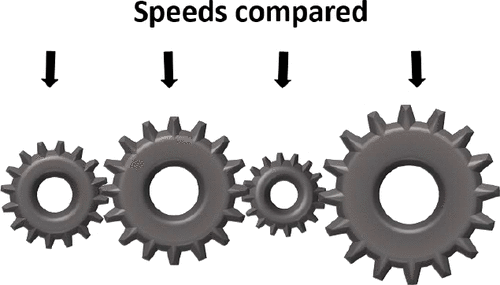Our official English website, www.x-mol.net, welcomes your
feedback! (Note: you will need to create a separate account there.)
Molecules, the Ultimate Nanomotor: Linking Chemical Reaction Intermediates to their Molecular Diffusivity
ACS Nano ( IF 15.8 ) Pub Date : 2021-09-15 , DOI: 10.1021/acsnano.1c05168 Tian Huang 1 , Bo Li 1 , Huan Wang 2 , Steve Granick 1, 3
ACS Nano ( IF 15.8 ) Pub Date : 2021-09-15 , DOI: 10.1021/acsnano.1c05168 Tian Huang 1 , Bo Li 1 , Huan Wang 2 , Steve Granick 1, 3
Affiliation

|
The intellectual community focused on nanomotors has recently become interested in extending these concepts to individual molecules. Here, we study a chemical reaction according to whose mechanism some intermediate species should speed up while others slow down in predictable ways, if the nanomotor hypothesis of boosted diffusion holds. Accordingly, we scrutinize the absolute diffusion coefficient (D) during intermediate steps of the catalytic cycle for the CuAAC reaction (copper-catalyzed azide-alkyne cycloaddition click reaction), using proton pulsed field-gradient nuclear magnetic resonance to discriminate between the diffusion of various reaction intermediates. We observe time-dependent diffusion that is enhanced for some intermediate molecular species and depressed for those whose size increases owing to complex formation. These findings point to the failure of the conventional Stokes–Einstein equation to fully explain diffusivity during chemical reaction. Without attempting a firm explanation, this paper highlights aspects of the physics of chemical reactions that are imperfectly understood and presents systematic data that can be used to assess hypotheses.
中文翻译:

分子,终极纳米马达:将化学反应中间体与其分子扩散率联系起来
专注于纳米马达的知识界最近对将这些概念扩展到单个分子感兴趣。在这里,我们研究了一种化学反应,根据其机制,如果促进扩散的纳米马达假设成立,一些中间物种应该加速,而另一些则以可预测的方式减速。因此,我们仔细检查绝对扩散系数(D) 在 CuAAC 反应(铜催化的叠氮化物-炔环加成点击反应)的催化循环的中间步骤中,使用质子脉冲场梯度核磁共振来区分各种反应中间体的扩散。我们观察到随时间变化的扩散对于某些中间分子种类会增强,而对于由于复合物形成而尺寸增加的分子种类会受到抑制。这些发现表明传统的 Stokes-Einstein 方程无法完全解释化学反应过程中的扩散率。本文没有试图给出明确的解释,而是重点介绍了尚未完全理解的化学反应物理学的各个方面,并提供了可用于评估假设的系统数据。
更新日期:2021-09-28
中文翻译:

分子,终极纳米马达:将化学反应中间体与其分子扩散率联系起来
专注于纳米马达的知识界最近对将这些概念扩展到单个分子感兴趣。在这里,我们研究了一种化学反应,根据其机制,如果促进扩散的纳米马达假设成立,一些中间物种应该加速,而另一些则以可预测的方式减速。因此,我们仔细检查绝对扩散系数(D) 在 CuAAC 反应(铜催化的叠氮化物-炔环加成点击反应)的催化循环的中间步骤中,使用质子脉冲场梯度核磁共振来区分各种反应中间体的扩散。我们观察到随时间变化的扩散对于某些中间分子种类会增强,而对于由于复合物形成而尺寸增加的分子种类会受到抑制。这些发现表明传统的 Stokes-Einstein 方程无法完全解释化学反应过程中的扩散率。本文没有试图给出明确的解释,而是重点介绍了尚未完全理解的化学反应物理学的各个方面,并提供了可用于评估假设的系统数据。











































 京公网安备 11010802027423号
京公网安备 11010802027423号